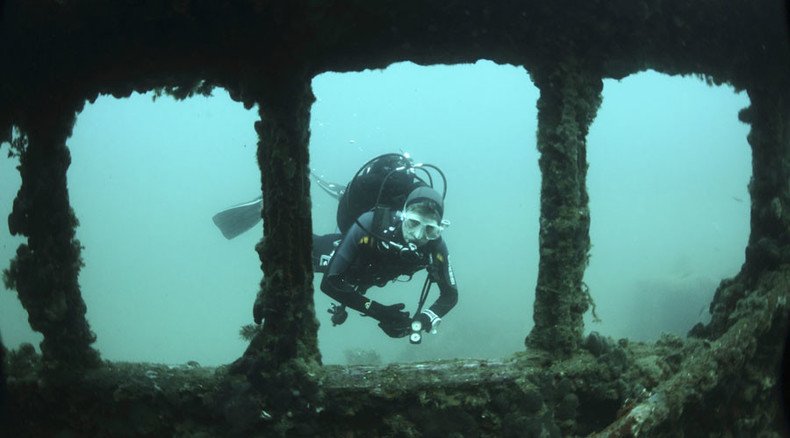Lost shipwreck discovered off North Carolina coast, may date to 1700s

Duke University scientists accidentally discovered a shipwreck more than a mile deep off the North Carolina coast. Artifacts suggest it could date as far back as the late 1700s – the time of the American Revolution.
The discovery occurred as researchers were exploring the ecology of deep-sea methane seeps along the East Coast.
Among the artifacts found in the shipwreck’s broken remains were an iron chain, wooden ship timbers, red bricks, glass bottles, an unglazed pottery jug and a metal compass. But sadly, so far, no buried treasure.
The wreck appears to date back to the late 18th or early 19th century, according to scientists, a time when the United States was expanding its sea trade with the rest of the world.
It was discovered using an underwater robotic vehicle named Sentry, and a manned submarine. The sonar-scanning system of the Sentry detected a dark line and a diffuse, dark area, which alerted scientists to the ship.
The first sighting was made on July 12, when marine scientists were carrying out an expedition aboard the Atlantis, the Woods Hole Oceanographic Institution research ship.
Scientists find shipwreck off North Carolina coast that may be from late 1700s: http://t.co/EIVFDnEslppic.twitter.com/dAAgvvQa9r
— ABC News (@ABC) July 17, 2015“This is an exciting find, and a vivid reminder that even with major advances in our ability to access and explore the ocean, the deep sea holds its secrets close,” said expedition leader Cindy Van Dover, director of Duke University’s Marine Laboratory, in a statement.
Van Dover, who is a specialist in deep sea ecosystems powered by chemistry rather than sunlight, said she had led four previous expeditions to the site but had had no idea there was a wreck just 100 meters away.
Officials with the National Oceanic and Atmospheric Administration’s (NOAA) Marine Heritage Program will now attempt to date and identify the lost ship.
“Lying more than a mile down in near-freezing temperatures, the site is undisturbed and well preserved,” said Bruce Terrell, chief archaeologist at the Marine Heritage Program, in a statement.
The director of the program, James Delgado, said the wreck rests along the path of the Gulf Stream, “which mariners have used for centuries as a maritime highway to North American ports, the Caribbean, the Gulf of Mexico and South America.”
Delgado said a large numbers of vessels had been sent down by violent storms off the Carolina coasts, but that few have been located because of the deep depths and the difficulties of working in an offshore environment.











